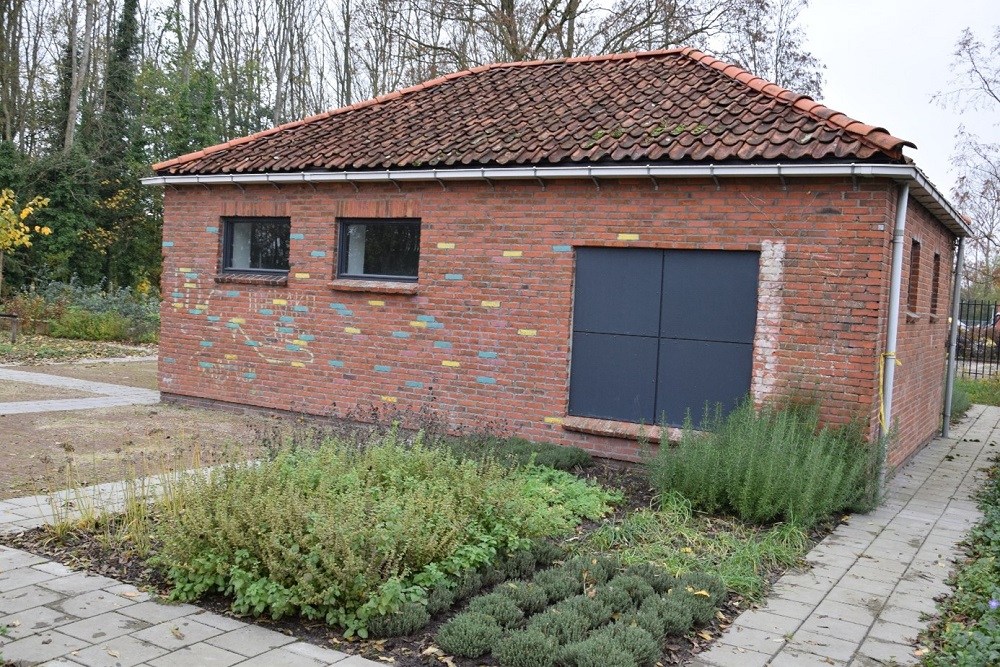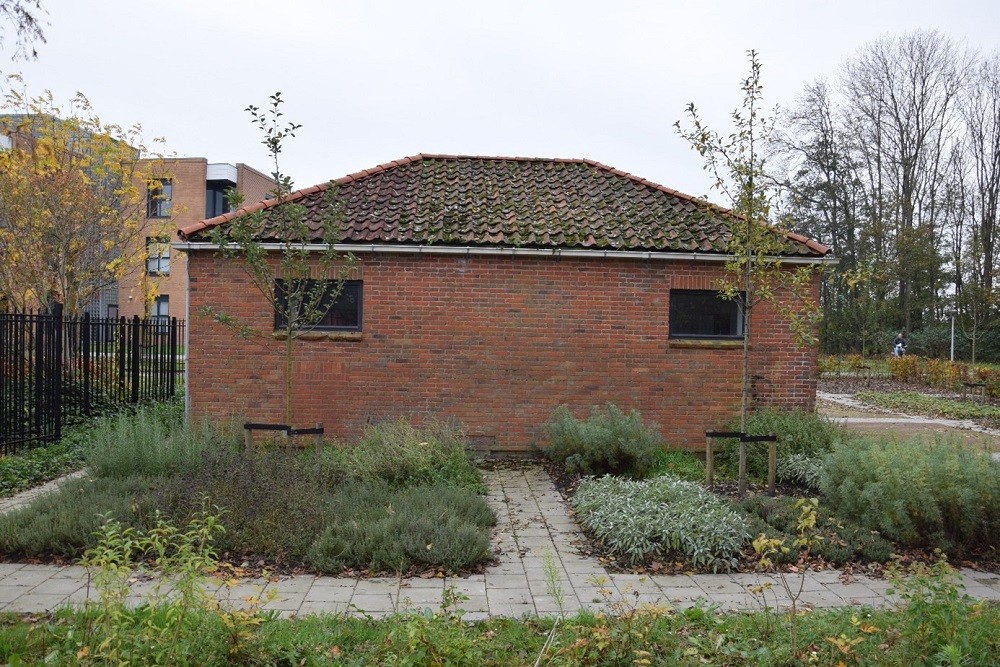Radio Bearing Station L÷wenzahn I Franeker
Radio bearing stations have been built by the Germans at various locations, especially near airports. These 'Jńgerleitstellungen' served as an aid to the navigation of the German aircraft. In short, such a rack contained an average of 5 Y-pillars with an associated radio transmitter. The German aircraft also had a transmitter and by measuring the time difference between the two, the distance between the transmitters could be determined. Some well-known Y-theorems include Teerose, Schneegl÷kchen, L÷wenzahn and Brennessel. The T-shaped building served as an administration building to process the incoming data. The data was then projected onto a Seeburgtisch (large glass plate with a map) by means of lights.
L÷wenzahn I (dandelion) was the code name for the radio bearing station at Franeker. It seems that the Germans did not look so much at Franeker when naming them, but more at Leeuwarden, a little further away, where the important night fighter airfield was also located. The Germans chose a piece of land just outside the built-up area along the road to Harlingen, just after the cemetery, as the location for the radio pointing station. Next to the Auswertung of the well-known standard model, five smaller barracks arose. The latter put the Germans on the track, over which a local railway had run. In addition, two larger barracks and some smaller structures were erected in this camp. Walls of hollow concrete elements were placed around the wooden barracks, which were filled with sand. They provided good protection against bullets and shrapnel. L÷wenzahn I arose in the second half of 1942.
Do you have more information about this location? Inform us!
Source
- Text: Haintje Kuipers
- Photos: Haintje Kuipers (1, 2), Cor Keuning (3, 4, 5)
Nearby
Point of interest
Monument
- Wall board Evacuees Sexbierum - Franeker
- Memorial Died Occupants Jewish Kibbutz Franeker - Franeker
- Liberation Memorial Franeker - Franeker
Cemetery
- Commonwealth War Graves Municipal Cemetery Franeker - Franeker
- Dutch War Graves Municipal Cemetery Franeker - Franeker
- Commonwealth War Grave Protestant Churchyard Dongjum - Dongjum






